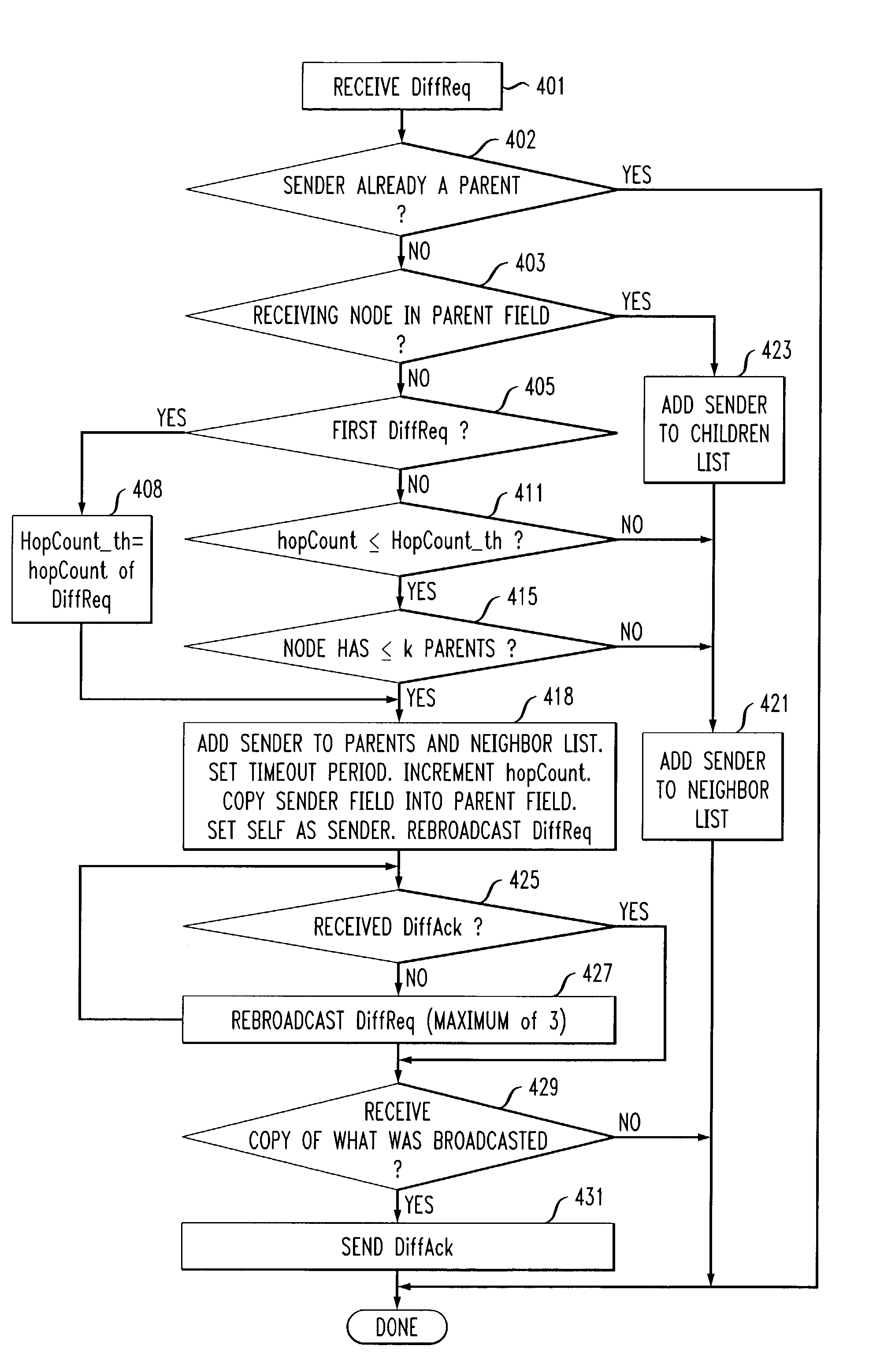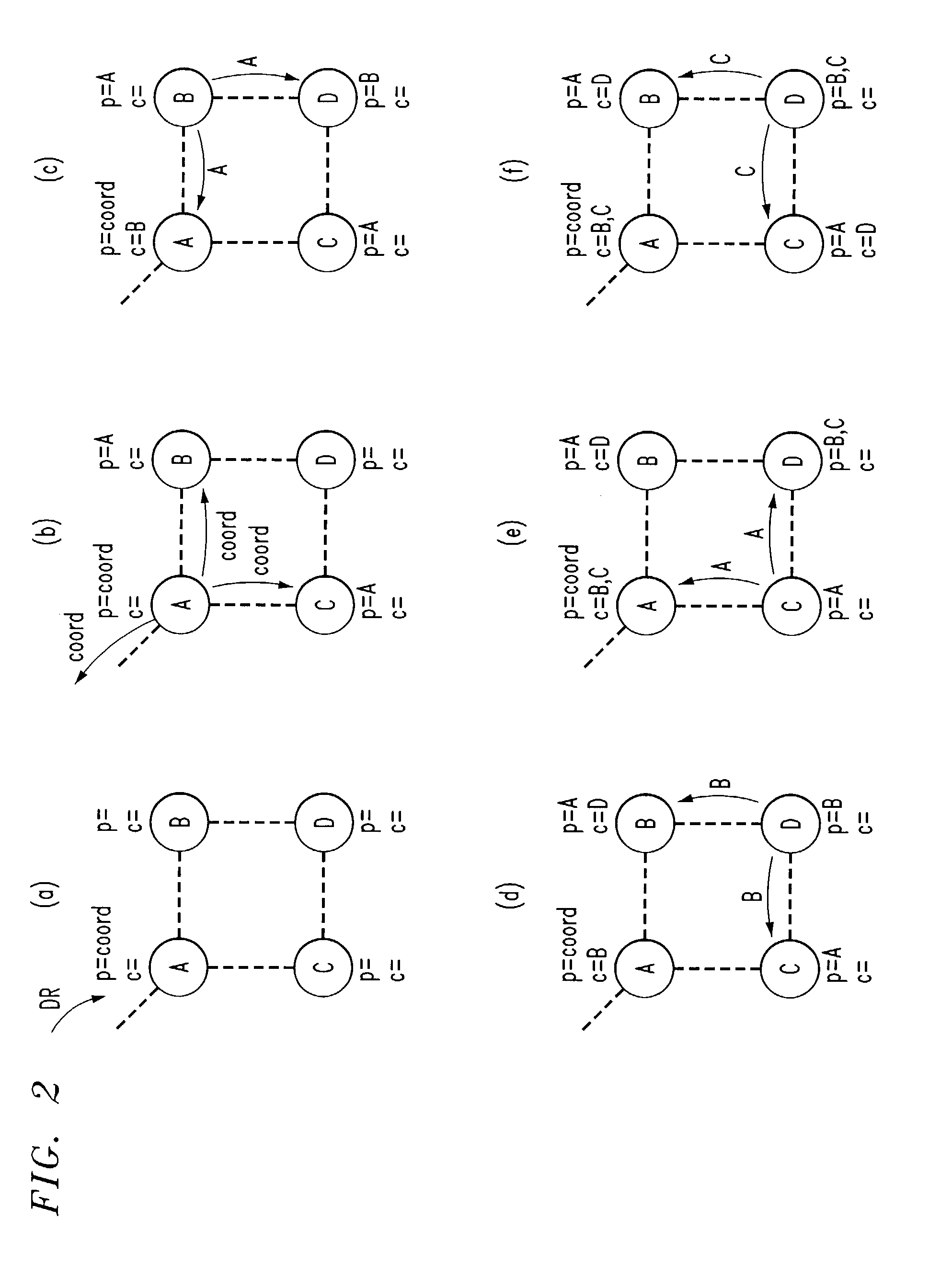Adaptive topology discovery in communication networks
a communication network and topology discovery technology, applied in the field of ad hoc networks, can solve the problems of prohibitively expensive, low-cost devices, e.g., sensors, etc., and achieve the effects of enhancing the robustness of the diffusion phase, enhancing and increasing the resilience of the topology discovery protocol
- Summary
- Abstract
- Description
- Claims
- Application Information
AI Technical Summary
Benefits of technology
Problems solved by technology
Method used
Image
Examples
Embodiment Construction
[0022]The hybrid network of FIG. 1 comprises wireline network WL; ad hoc wireless network WN; wireline nodes B1 and B2; gateway nodes G1 through G3; and mobile nodes M1 through M5. Nodes B1 and B2 are connected only to wireline network WL. Nodes M1 through M5 are only connected to wireless network WN and nodes G1 through G3 are connected to the wireline and wireless networks. Wireline network WL may be, for example, an Ethernet network connected to the Internet via a broadband modem M, such as a cable modem or DSL modem. Nodes B1, B2 and G1 through G3 are illustratively desktop computers. Nodes M1 through M5 are illustratively laptop computers, PDAs, or other wireless devices that use the wireless network WN to communicate with each other and to access the Internet via wireline network WL. Some of the wireless devices may be mobile; others, such as sensors or door actuators / openers, may be fixed.
[0023]In the discussion that follows, nodes G1 through G3 and M1 th...
PUM
 Login to View More
Login to View More Abstract
Description
Claims
Application Information
 Login to View More
Login to View More - R&D
- Intellectual Property
- Life Sciences
- Materials
- Tech Scout
- Unparalleled Data Quality
- Higher Quality Content
- 60% Fewer Hallucinations
Browse by: Latest US Patents, China's latest patents, Technical Efficacy Thesaurus, Application Domain, Technology Topic, Popular Technical Reports.
© 2025 PatSnap. All rights reserved.Legal|Privacy policy|Modern Slavery Act Transparency Statement|Sitemap|About US| Contact US: help@patsnap.com



